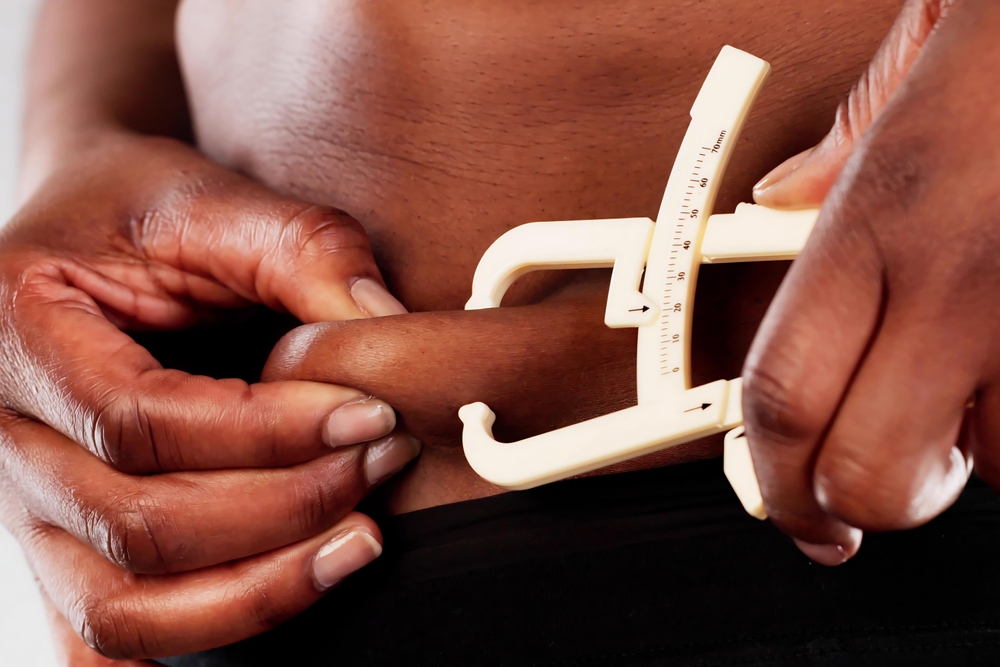The one-meal-a-day strategy, often shortened to OMAD, is an advanced form of intermittent fasting where a person consumes all of their daily calories in a single sitting. This means no snacks, no second meals, and no extended eating window. The eating window typically lasts one hour, followed by 23 hours of fasting. While this sounds extreme, many people follow OMAD to lose weight, improve focus, and simplify their lifestyle. After a recent simulation demonstrated major physical changes in people who followed OMAD, medical professionals and researchers have started to dig deeper into what really happens inside the body. The idea of shrinking your meals to one event per day sounds simple, but the physical consequences are complex and deeply individual.
Initial Physical Reactions in the First Days

During the first few days of eating one meal a day, most people experience intense hunger, mood swings, and dips in concentration. These early symptoms are a result of sudden shifts in blood sugar levels and hormonal responses to prolonged fasting. Your body, which is used to frequent meals, has to adjust by increasing the use of stored fat and adapting energy pathways. Some individuals experience headaches or dizziness due to temporary drops in blood pressure or dehydration. This period, often referred to as the adaptation phase, is when most of the early physical stress is felt. However, once the body stabilizes, new energy patterns begin to emerge. Your metabolism gradually shifts to fat as its primary fuel source, and your insulin levels drop, which may reduce inflammation and improve cardiovascular health. These first reactions serve as a turning point in how your physical system manages food and energy.
Changes in Physical Energy and Mental Focus

Once the initial transition phase ends, most people notice improvements in energy stability and mental clarity. This is due to the absence of large insulin spikes, allowing for more consistent fuel delivery to the brain. With only one digestive cycle each day, the body can redirect blood flow and energy toward cognitive function and cellular repair. Many people report fewer energy crashes and a sharper sense of awareness throughout the day. However, not all experiences are equal. Some individuals may feel sluggish or irritable if their one meal lacks protein, fats, or essential vitamins. The success of OMAD in maintaining strong physical and mental performance depends on food quality, hydration, and individual nutritional needs. Without proper planning, the physical benefits can reverse into fatigue or nutritional imbalance.
Read More: The Hidden Hormonal Dangers Behind These 8 Wellness Trends
Physical Effects on Weight and Body Composition

One of the most widely recognized physical effects of eating one meal a day is weight loss. This is primarily because it’s difficult to consume the same number of calories in one sitting that you would across multiple meals. A calorie deficit leads to fat loss, especially in individuals with high insulin resistance. Over time, the simulation revealed a visible reduction in body fat and a leaner frame. However, experts caution that while fat may be lost, muscle mass is also at risk if protein intake is insufficient. Muscle tissue requires regular stimulation and protein feeding for maintenance. On OMAD, spacing meals too far apart without supporting workouts and nutrients can lead to muscle loss, which can alter body composition negatively even as the scale drops. This loss of lean mass may reduce metabolic rate and physical strength. Proper resistance training and attention to macros help minimize this effect.
Impact on Physical Performance and Exercise Capacity

Physical performance during workouts may change depending on your body’s response to fasting. For endurance athletes, the shift toward fat-burning can be beneficial over time, improving stamina and fuel efficiency. However, for high-intensity or strength-based activities, the lack of readily available carbohydrates can hinder peak performance. Glycogen stores deplete quickly without frequent meals, reducing explosive power and overall output. Recovery can also slow down due to reduced protein synthesis windows. This means soreness may last longer, and muscle repair may be delayed. Experts advise tailoring your workout schedule around your eating window to support physical performance. For example, training just before your meal can help refuel muscles quickly. Timing and content of your single meal become even more critical when physical performance is a priority.
Physical Stress on Hormones and Organs

Eating only once per day puts your body under a unique kind of physical stress. Organs like the pancreas and liver must adjust to processing a large amount of food all at once instead of managing smaller, more frequent meals. While this can give the digestive system more downtime to repair and rest, it can also overburden it if the meal is overly rich or too fast to digest. Hormonal changes are also significant. Cortisol levels, which govern stress response, may rise during extended fasting, especially in individuals with existing imbalances. In women, OMAD can lead to disrupted menstrual cycles and decreased fertility if caloric intake is too low. Thyroid function may also slow to conserve energy. These hormonal shifts have deep physical effects, influencing sleep, mood, metabolism, and body temperature. Regular medical check-ins are strongly recommended for anyone considering OMAD long-term.
Long-Term Physical Health Benefits and Potential Risks

There are some well-documented long-term benefits of intermittent fasting, including improved insulin sensitivity, reduced blood pressure, better cholesterol profiles, and enhanced autophagy, which is the body’s way of cleaning out damaged cells. Many users also report improved digestive regularity, clearer skin, and a better relationship with food. However, risks exist. Prolonged nutrient deficiencies can affect bone density, immune strength, and muscle tone. Without enough vitamins and minerals, especially calcium, magnesium, and B vitamins, the body may start to show signs of wear. The physical appearance may suffer, including skin dullness, brittle nails, and reduced muscle definition. This is why OMAD must be done with nutrient-dense foods and sometimes medical supervision. The simulation highlighted both gains and losses, showing that long-term physical outcomes depend more on how OMAD is done than the fasting itself.
Gut Health and Physical Digestion Responses

Digesting one large meal a day is a different physical process than breaking down several smaller ones. The stomach and intestines must work harder in a shorter time, often leading to bloating, heartburn, or cramping. The volume of food can stretch the stomach if eaten too quickly, and poor food choices can aggravate the gut lining. Fiber, healthy fats, and fermented foods can support gut health during OMAD by easing digestion and maintaining a strong microbiome. Many followers of OMAD also report a flatter stomach and improved bowel regularity, although this varies. Experts suggest chewing slowly, staying hydrated, and avoiding high-sugar meals to minimize physical stress on the digestive system. In the long run, a healthy gut supports nutrient absorption, hormonal balance, and overall physical resilience.
Physical Appearance and Skin Health Changes

When done correctly, OMAD can lead to physical improvements in appearance such as reduced bloating, increased muscle definition, and improved skin clarity. Stable blood sugar and reduced inflammation play a major role in these changes. The fasting window allows the body to focus on repair and regeneration, which can enhance collagen production and cellular renewal. However, these benefits are not guaranteed. If the one meal lacks omega-3s, zinc, or hydration, the skin may suffer. Dry patches, acne, and hair thinning are signs of nutritional stress. Your skin often reflects internal physical health, and visible changes can be one of the first signs something is off. Paying attention to micronutrients is essential for maintaining both internal and external physical wellness.
Who Should Avoid the One Meal a Day Diet

While OMAD has its supporters, it is not suitable for everyone. Children, adolescents, pregnant or breastfeeding women, and individuals with a history of eating disorders should avoid it. The intense fasting can disrupt development, emotional health, and critical physical systems in these groups. People with diabetes, heart conditions, or thyroid disorders should consult a healthcare provider before attempting this diet. OMAD also requires high discipline and strong self-awareness. Without these, the physical impact could be negative rather than beneficial. Experts emphasize that even within intermittent fasting circles, OMAD is considered one of the most extreme protocols and should be approached cautiously.
Physical Impact of Eating One Meal a Day

Eating only one meal a day has clear and measurable physical effects on the body. From changes in weight and insulin to shifts in digestion, hormones, and appearance, the OMAD lifestyle transforms how your body works on multiple levels. The simulation that showed rapid body changes captured public attention, but experts remind us that long-term success relies on planning, nutrient intake, and awareness of individual needs. Physical health should never be sacrificed for fast results. If OMAD fits your lifestyle and medical profile, it can offer real benefits, but it must be done responsibly. The body is resilient, but it also requires care, consistency, and nourishment to thrive on a restricted schedule.
Read More: 6 Popular Wellness Hacks That Could Be Making You Feel Worse
Disclaimer: This article was created with AI assistance and edited by a human for accuracy and clarity.
Disclaimer: This information is not intended to be a substitute for professional medical advice, diagnosis or treatment and is for information only. Always seek the advice of your physician or another qualified health provider with any questions about your medical condition and/or current medication. Do not disregard professional medical advice or delay seeking advice or treatment because of something you have read here.

